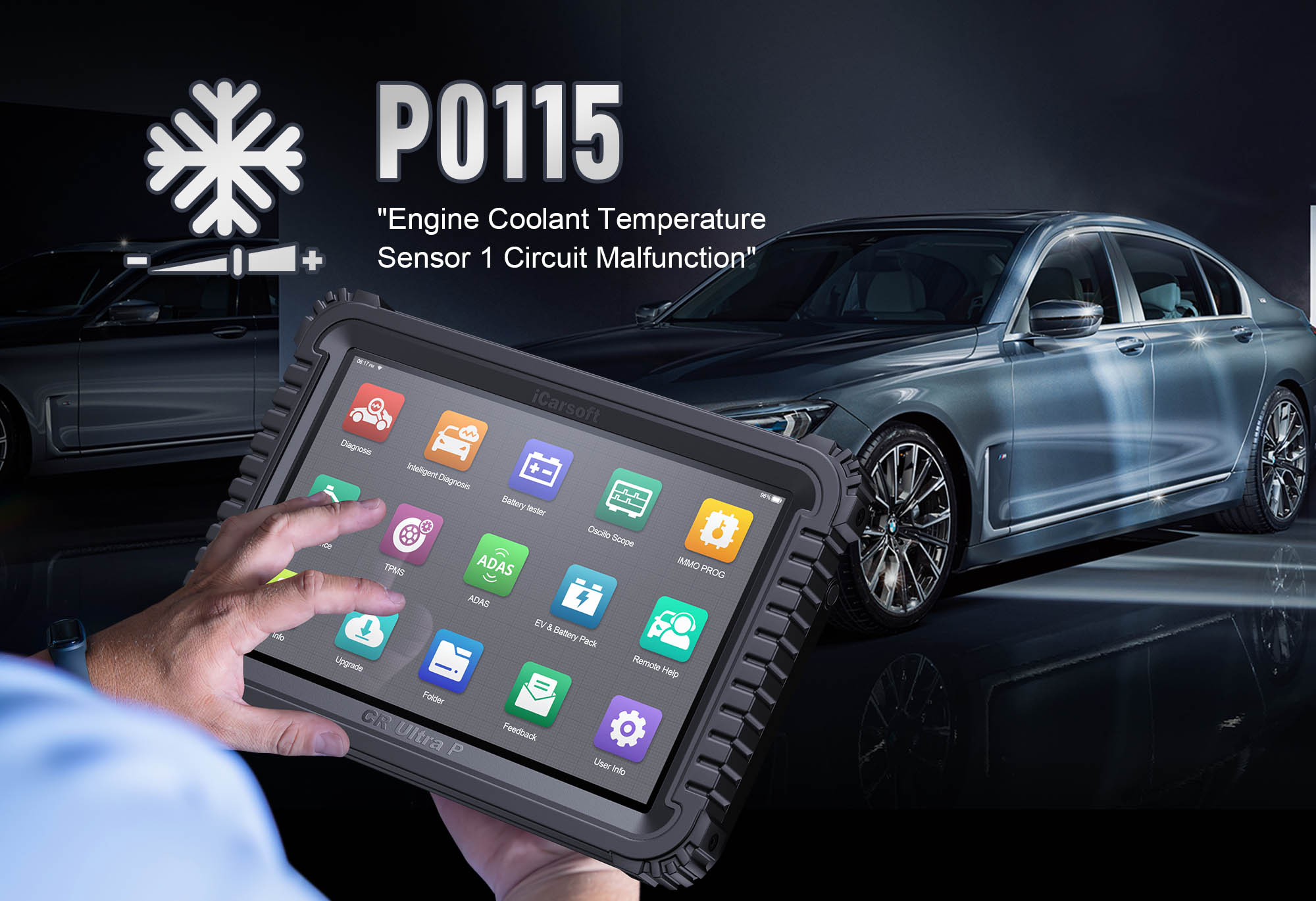Understanding OBD-II Code P0115: Engine Coolant Temperature Sensor 1 Circuit Malfunction
Understanding OBD-II Code P0115: Engine Coolant Temperature Sensor 1 Circuit Malfunction
When your vehicle logs the trouble code P0115, it signals a problem with the Engine Coolant Temperature (ECT) Sensor 1 circuit. This OBD-II code indicates the Powertrain Control Module (PCM) is detecting an erratic, unusually high, or low voltage from the ECT sensor circuit, making it unreliable.
What Does P0115 Mean?
-
P0115: Engine Coolant Temperature Sensor 1 Circuit Malfunction.
-
Triggered when the PCM senses voltage outside expected parameters—e.g., open circuits, shorts, or erratic signal readings.
-
The “1” refers to Sensor 1—typically used for engine management (not driver display).
Common Symptoms of P0115
-
Check Engine Light (MIL) is illuminated.
-
Hard starts, especially in cold weather, accompanied by poor fuel economy
-
Engine runs excessively rich or lean, affecting drivability and emissions.
-
In severe cases, engine overheating or erratic gauge readings may occur
Top Causes of the P0115 Code
|
Cause
|
Description
|
|
Bad ECT sensor
|
Sensor thermistor failure causing erratic resistance
|
|
Open/shorted wiring
|
Damaged harness or pins causing voltage issues
|
|
Connector problems
|
Corrosion, loose contacts, or moisture entry
|
|
Low/contaminated coolant
|
Air pockets or dirt distort temperature readings
|
|
PCM fault
|
Uncommon, but failed control module can misinterpret signals
|
Diagnosing the P0115 Code
A reliable repair begins with pinpointing the underlying issue:
-
Scan and record freeze-frame data
Capture conditions when the code triggered
-
Visual inspection
Focus on the sensor, connectors, and cooling system
-
Test sensor resistance
Expect roughly 10 kΩ at –10 °C, 2.5 kΩ at 20 °C, 300 Ω at 80 °C
-
Circuit testing
Confirm 5 V reference and ground continuity at connectors
-
Coolant & thermostat check
Top up or replace fluid, purge air
-
Replace parts as needed
ECT sensor, wiring, or in rare cases—PCM
Fixing the P0115 Code: Best Practices
-
Replace a faulty ECT sensor if diagnostics show it’s out of spec.
-
Repair or replace damaged wiring and connectors to restore reliable signal flow.
-
Flush and refill coolant, ensuring correct mixture and air-free system.
-
Clear the code and take a test drive to ensure it doesn’t return.
Fuel economy and emissions often improve immediately after resolution.
Diagnostic Tools for P0115
Effective troubleshooting of P0115 benefits from advanced diagnostic features:
Live-streaming data
Monitor ECT readings in real-time and access freeze-frame conditions
Circuit health tests
Detect open circuits, shorts, or voltage irregularities in the ECT circuit
Bi-directional controls
Test cooling fan operation, monitor coolant flow, and run active system tests
Code management
Clear codes after repairs and verify system integrity with follow-up scans
Final Thoughts: Don’t Ignore P0115
Leaving P0115 unhandled risks:
-
Poor engine performance, increased fuel costs, and possible catalytic converter stress.
-
Engine damage from overheating or running too rich/lean.
-
Failing an emissions test due to improper operating temperature.
Fix it early: Use systematic diagnostics to identify and resolve the root cause, ensuring your engine operates at optimal temperature.
FAQs About P0115 Code
Q: Where is the ECT Sensor 1 located?
A: It’s typically mounted on the engine block or cylinder head, often near the thermostat housing, where it can measure coolant temperature directly.
Q: Can I drive with P0115?
A: Short-term driving may be possible, but prolonged operation can lead to overheating or poor fuel mixture, risking engine damage. Address promptly.
Q: How much does it cost to fix P0115?
A: Costs range from $50–$150 for parts (sensor, wiring) plus labor, depending on the cause. DIY repairs are often straightforward for sensor replacement.
Q: Will a bad thermostat cause P0115?
A: No, a thermostat controls coolant flow but doesn’t directly affect the ECT sensor circuit. However, overheating from a stuck thermostat can damage the sensor over time.





